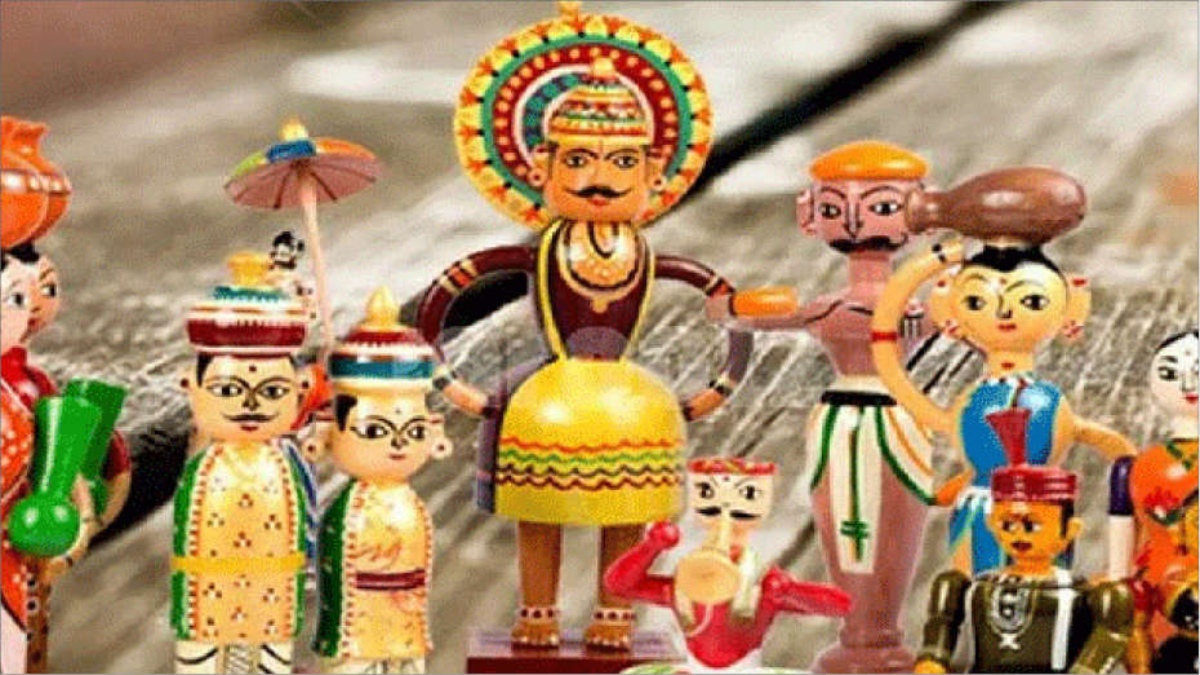


It was while taking classes in the history of the trade of materials and objects at Oxford’s Ashmolean Museum that I first learnt of the toys of the Indus Valley Civilisation. One of them was a little figurine cart, something that a child might pull with a string. I remember being delighted and fascinated by the sheer length of history that India has when it comes to toys. Like everything else, it also developed local nuances with time—a toy from one part of India can be enchantingly different from a toy from another part. In one of his Mann Ki Baat radio talks, Prime Minister Narendra Modi had put the spotlight on the Etikopakka toys from Andhra Pradesh, which are made of lacquer, for their traditional beauty and charm and their environment-friendliness. I have been remembering this recently as India prepares to host a major national toy fair between 27 February 2021 and 2 March 2021 to showcase the myriad opportunities in the country.
The Indian toy industry is worth around $1 billion. Being one of the biggest producers of polyester and allied fibres, and other raw materials, at a cost-effective price, the country is planning to expand its share in global toy manufacturing with an elaborate plan that maps almost every major economic department of the government.
Indian states, from Maharashtra to Andhra Pradesh and Tamil Nadu to Telangana, have set up, or are in the process of setting up, significant manufacturing capabilities and clusters aimed at producing quality toys not only for India, which has one of the youngest populations in the world, but also for the export market. States like Gujarat are offering significant parcels of the setting up of toy manufacturing clusters, while Uttar Pradesh has developed a toy city, with another one coming up. Karnataka, meanwhile, is pitching its toy making cluster in Koppal, spread across 400 acres, as a ‘toy manufacturing ecosystem’ at par with the best of such facilities in the world. The creation of such clusters provides a major boost to local manufacturing and creates tens of thousands of jobs. Then, of course, there is Hamleys, one of the most celebrated toy brands in the world, which is now Indian-owned.
Beyond all these significant achievements, there is a story that can, and is, emerging in India, which would be of global interest. India is not only looking to promote its traditional toys, of which there are many, but also marry its technological prowess with toy making. Toys, in fact, map onto each of the major priorities of the government, whether it is self-reliance (Aatmanirbhar Bharat) or ‘Vocal for Local’. Toys are also a great tool to make new generations understand the richness and diversity of Indian history, culture and civilisation — an example is the Thanjavur doll, the traditional Indian bobblehead made of terracotta, which has been given a GI tag for its distinct value in handcrafted toys. More recently, badminton player Manasi Joshi became the first Indian para-athlete to get a one-of-a-kind Barbie doll made by Mattel in her honour.
There are some questions now which are relevant for the growth of the toy industry in India. For instance, can Indian robotics join hands with toy makers? In a country where digital education is soaring, can new playful tools be invented by bringing toy making into education and bridging goals between pedagogy and playfulness?
Nevertheless, whether it is through financial incentives or supply chain benefits, India is planting its flag in the global toy manufacturing supply chain and giving a boost to its more than 4,000 toy manufacturers.
The upcoming toy fair will be a gateway to understand how history and tradition and the beautiful handiwork to make toys in India can come together with cutting-edge technology to make the country a global destination for the manufacture, sale and purchase of toys. It is clear that the new age of toys and toy making is dawning in India.
The writer is Vice President and Head of Research at Invest India, the national investment promotion agency. Views expressed are personal.